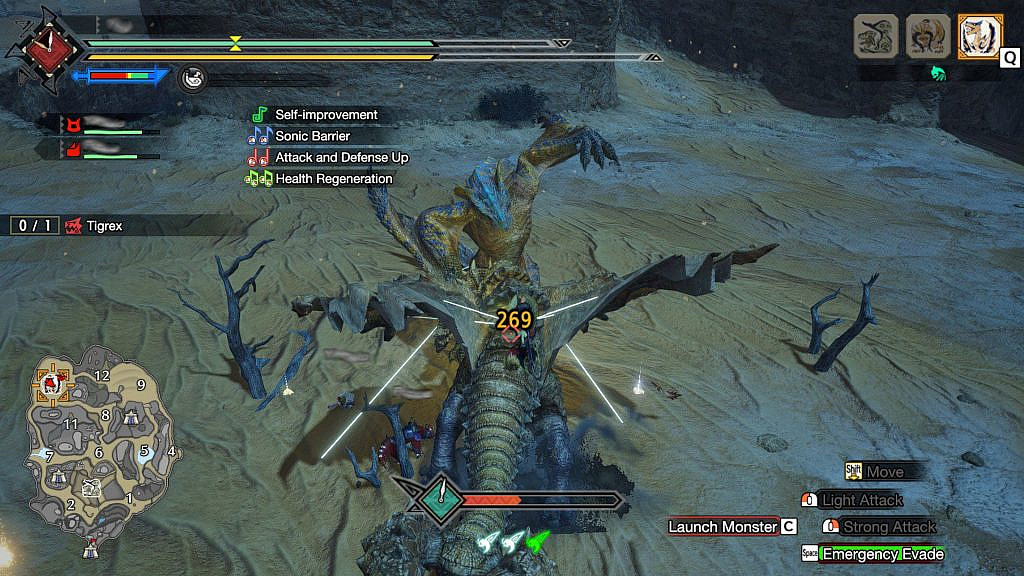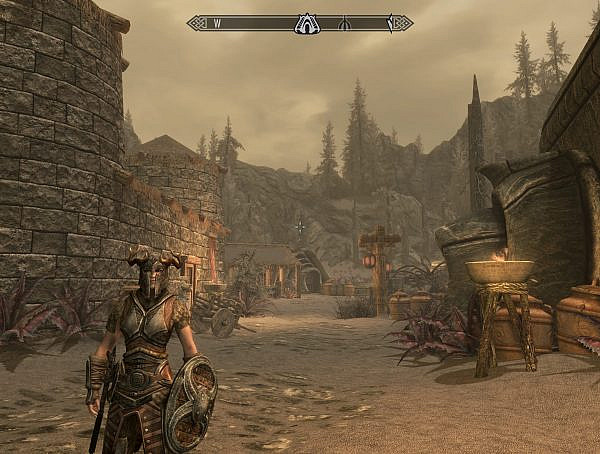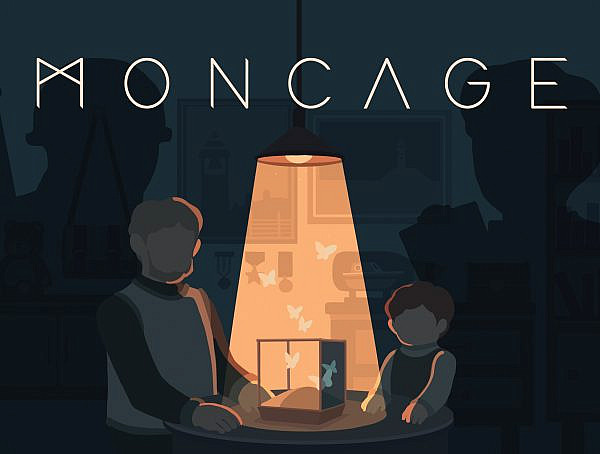You’re a hunter living in Kamura, a village plagued by monster attacks by the so-called Rampage, a horde of monsters. Your role? What it says on the tin. Utilising a weapon from 14 different types of weapons such as bows, lances and swords, you can hunt over 40 large monsters, and craft more gear from their parts, rinsing and repeating the process until you’ve had your fill. The fun is in finding your favourite weapon to use, then mixing and matching gear with different types of skills to create a set that works with your weapon of choice.

Outside of crafting more powerful gear, dress-up with a “layered armour” system is possible: create a stylish set utilising different set items and changing their colours.
When playing solo, you’re also joined with two “buddies” – a cat type Palico and a dog type Palamute. Former which mostly has utility type of kit including healing items, extra traps, extra loot from monsters etc. and latter which, while also capable of dealing some damage, can serve as a mount for you to traverse around the hunt areas. You can also opt to have two cats or two dogs instead if you so desire.
You can also join up with up to three other hunters on hunts (+ one buddy per hunter) to share the experience with. In my opinion multiplayer is the core of the game experience, especially if you have friends to play with. Though with limited faints per quest, just 3, random people especially can become a liability to the success of your hunt. That said, the hunts rarely, in my experience, end up in failure. But even if you are careful there are moves that some monsters have, which can easily knock you out without you even realising what happened, leaving you saying “ok” or [angry noises].
Depending on if you captured or killed the target the hunt rewards vary. Breaking parts, such as wings, head or severing a tail also affect your possible rewards. Sometimes your luck sucks and getting that one material you desire takes many hunts, which can easily leave you frustrated. Overall, it’s not too bad though.

During your hunts, you can also utilise silkbind attacks to make the monsters controllable for a short while, during which you can use them to attack other monsters.
There are two notable changes when it comes to hunting in Rise (compared to World). First off, there’s no monster tracking. Once you start the hunt, you can just basically rush to the target monster. Secondly, in World, riding the monster was purely about stabbing the monster and making it fall for a while. In Rise, you can control the monster and utilise their unique attacks against other monsters in the area, making them drop loot. Crashing into another monster will also make the other monster rideable, so it’s a very effective way to wear down the monsters during hunts. Personally, both changes were for the better, although it’s understandable if someone preferred the tracking for immersion.
The quests are split between regular hunts (found within hub and village), arena quests and Rampage quests. Rampage quests are the gimmick quests of Rise as they are more in the vein of tower defence than anything else, and as such, designed to be played in multiplayer. You defend Kamura’s gates from two to three waves of monsters, with the last wave led by a more powerful monster. In solo, I feel like Rampage difficulty is complete nonsense as they try to make you focus on so many things at once that you can’t. The arena quests are hunts done within a small arena with predetermined equipment and essentially act as showcases of your skill as they double as time attacks and personally, I just steer clear of them.
Overall, it took me around 80 hours to finish all the unique large monster hunts, and after that, I decided it was enough until the new expansion rolls around. The gameplay loop is satisfying but can easily end up burning you out.
Publisher: Capcom
Developer: Capcom
Platforms: PC, Nintendo Switch
Release date: 12.1.2022 (PC), 26.3.2021 (NSW)
Players: 1-4
PEGI: 12
Genres: Action
Images: Screenshots from the game, taken by the author
You might also like
More from Game Reviews
Moncage Review: A Puzzle Game with Mind-Boggling Optical Illusions
Solving a huge #optical_illusion #puzzle in a tiny cube to discover a dark, #emotional story of trauma
Mining, Mayhem, and Bugs: A Deep Rock Galactic Review
Fight monsters, mine riches, and cause chaos with your dwarf crew — welcome to Deep Rock Galactic!
Microsoft Solitaire: classic games to kill time
Perhaps the most played games in offices worldwide, Microsoft Simulator is a pinacle of design from the era where games …
















